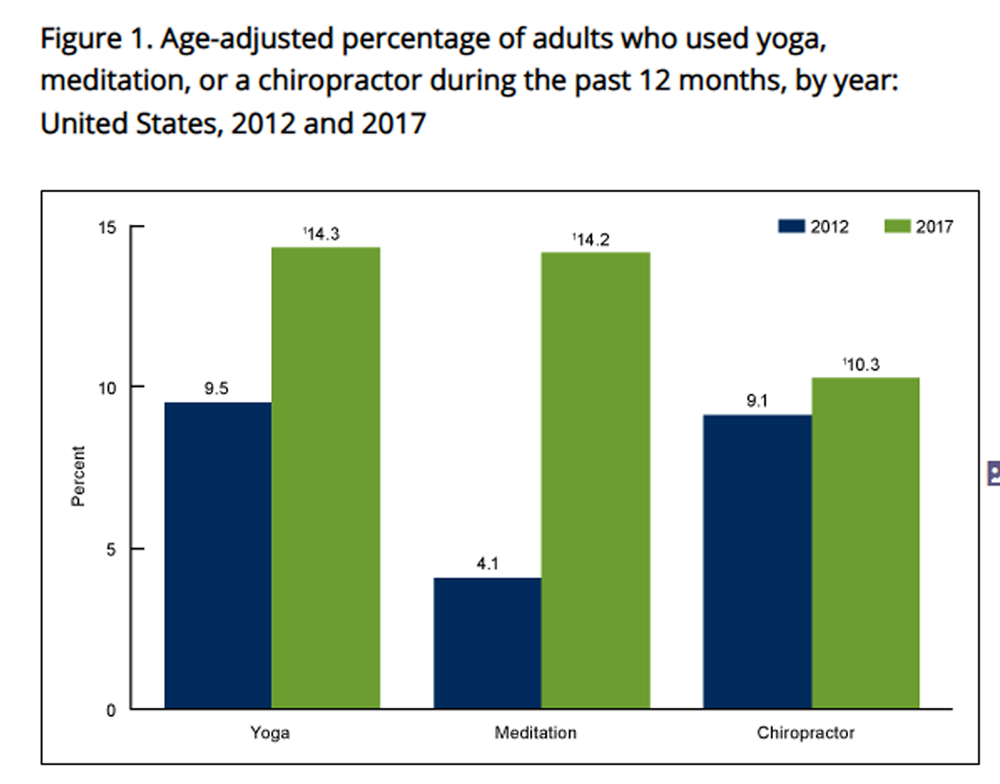The Prevalence, Patterns, and Predictors of Chiropractic Use Among US Adults: Results From the 2012 National Health Interview Survey
SOURCE: Spine (Phila Pa 1976) 2017 (Dec 1); 42 (23): 1810-1816
Jon Adams, Wenbo Peng, Holger Cramer, Tobias Sundberg, Craig Moore, et al.
Australian Research Centre in Complementary and Integrative Medicine (ARCCIM),
Faculty of Health, University of Technology Sydney,
Sydney, New South Wales, Australia.

From: Use of Yoga, Meditation, and Chiropractors Among U.S. Adults
Study design: Secondary analysis of a national survey.
Objective: The aim of this study was to investigate the prevalence, patterns, and predictors of chiropractic utilization in the US general population.
Summary of background data: Chiropractic is one of the largest manual therapy professions in the United States and internationally. Very few details have been reported about the use of chiropractic care in the United States in recent years.
Methods: Cross-sectional data from the 2012 National Health Interview Survey (n = 34,525) were analyzed to examine the lifetime and 12-month prevalence and utilization patterns of chiropractic use, profile of chiropractic users, and health-related predictors of chiropractic consultations.
Results: Lifetime and 12-month prevalence of chiropractic use were 24.0% and 8.4%, respectively. There is a growing trend of chiropractic use among US adults from 2002 to 2012. Back pain (63.0%) and neck pain (30.2%) were the most prevalent health problems for chiropractic consultations and the majority of users reported chiropractic helping a great deal with their health problem and improving overall health or well-being. A substantial number of chiropractic users had received prescription (23.0%) and/or over-the-counter medications (35.0%) for the same health problem for which chiropractic was sought and 63.8% reported chiropractic care combined with medical treatment as helpful. Both adults older than 30 years (compared to younger adults), and those diagnosed with spinal pain (compared to those without spinal pain) were more likely to have consulted a chiropractor in the past 12 months.
Conclusion: A substantial proportion of US adults utilized chiropractic services during the past 12 months and reported associated positive outcomes for overall well-being and/or specific health problems for which concurrent conventional care was common. Studies on the current patient integration of chiropractic and conventional health services are warranted.




Leave A Comment